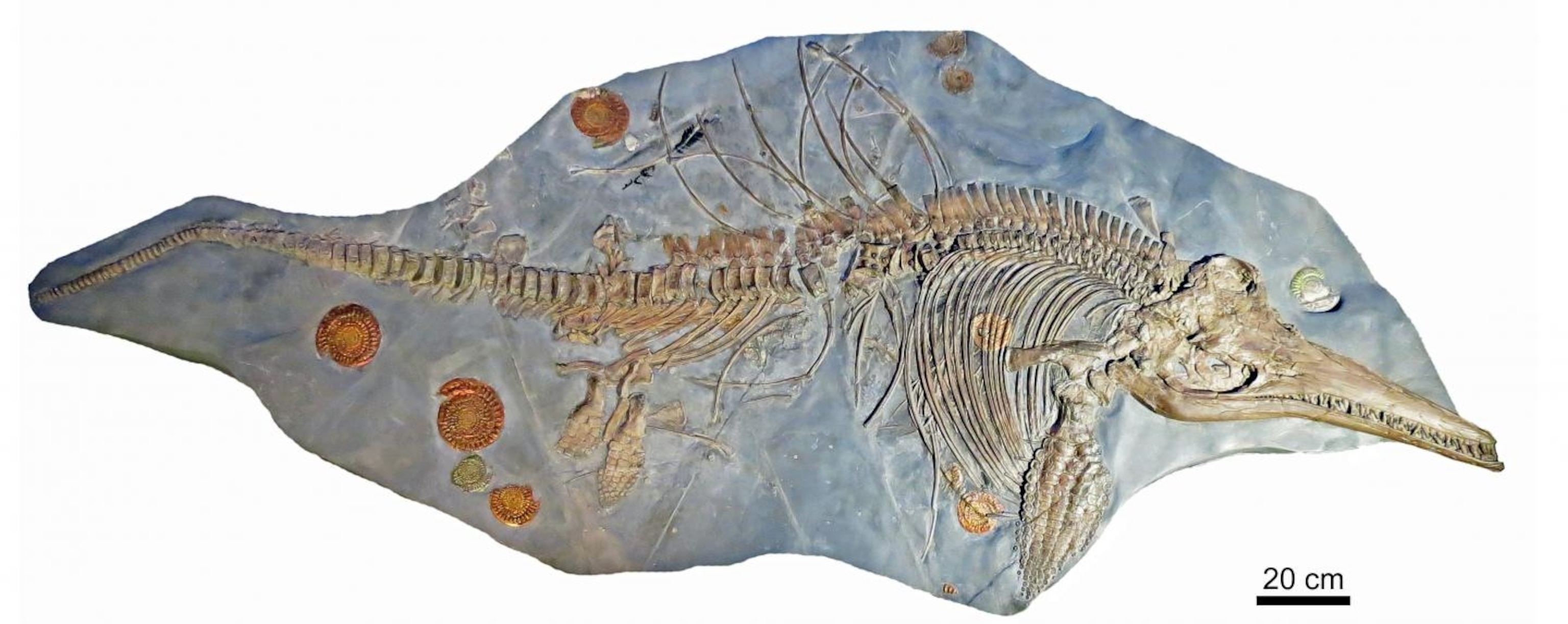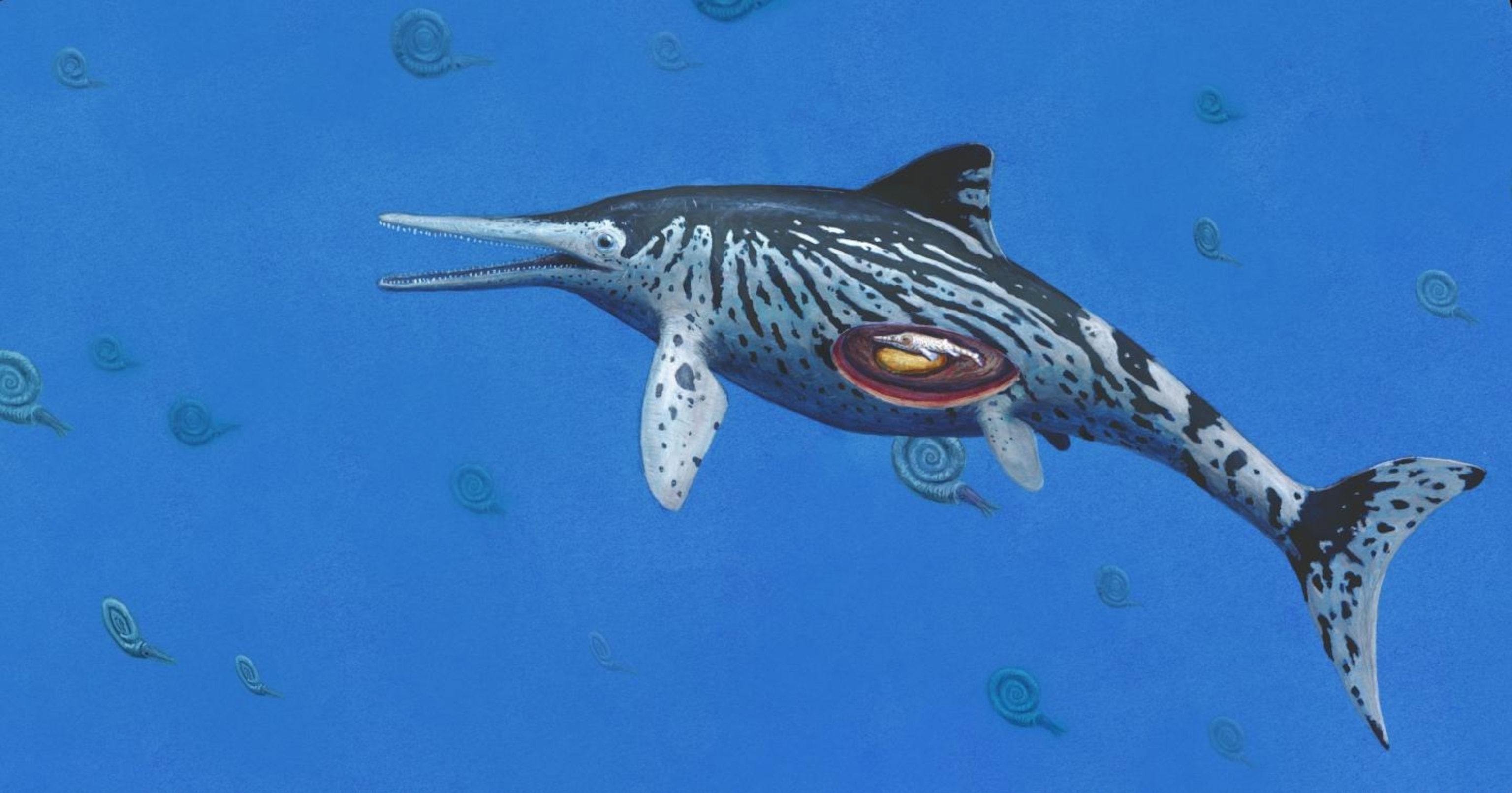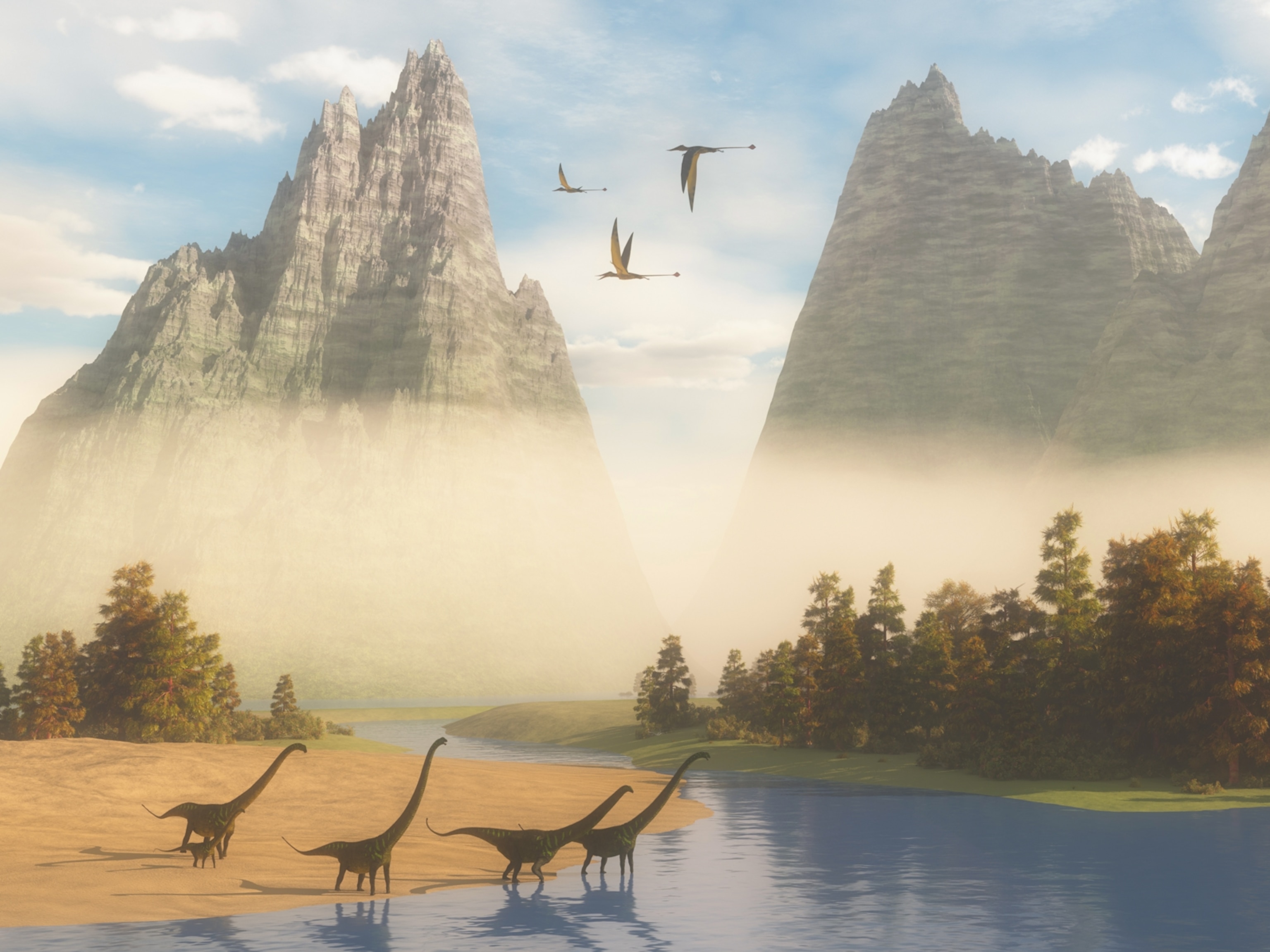Largest 'Sea Dragon' Fossil Accidentally Discovered in Museum
The paleontologist who made the discovery was originally at the museum to study a fossil that resembles the Loch Ness monster.
Sven Sachs, a paleontologist from the Bielefeld Natural History Museum in Germany, was at the Lower Saxony State Museum in Hannover to study an ancient sea reptile when one of the museum's display fossils caught his eye.
The specimen had originally been unearthed in the mid-1990s in Somerset, England, but it had remained largely unstudied since. Sachs suspected it was an Ichthyosaurus. Commonly mistaken for a dinosaur, the species was more like a "sea dragon" marine reptile that had a long, flexible body and may have swum like eels.
"I found it very extraordinary," said Sachs. "[It was] way bigger than any specimen I had examined." He explained the specimen had previously been labeled as a smaller species within the Ichthyosaurus group.
Sachs reached out to Ichthyosaurus expert Dean Lomax from the University of Manchester, and in early 2017 they examined the specimen together, finding it to be a specimen of the species Ichthyosaurus somersetensis.

Their findings, published in the journal Acta Palaeontologica Polonica, describe the largest known specimen of its kind. During examinations of the creature, they found the museum had given it the tail of a different Ichthyosaurus species to make it look more complete. Regardless, they calculated that the reptile was somewhere around 10 feet long, making it the largest fossil specimen of its kind. The Ichthyosaurus also contained a small seven-centimeter embryo when it died.

It was only last year that Lomax and a team of researchers officially named the Somerset species.
"It amazes me that specimens such as this [the biggest] can still be 'rediscovered' in museum collections. You don't necessarily have to go out in the field to make a new discovery," Lomax said in a press release.
For Sachs, it's been a busy year.
Another Ancient Sea Creature Find
The paleontologist released a second paper today in the Journal of Vertebrate Paleontology detailing his research on a plesiosaur fossil, the oldest of its kind. The skeleton, which also is held at the Lower Saxony State Museum, is a new plesiosaur species christened Lagenanectes richterae.
Sketch renderings of plesiosaurs resemble the popular imagination of the Loch Ness Monster. The creatures had necks with 75 vertebrae, giving them the longest necks of any prehistoric marine reptile. Sachs noted the plesiosaur also had grooves in the upper part of its mouth that may have been used to sense for prey similar to how modern crocodiles use bumps on their snouts to sense vibrations underwater.
The 200-million-year-old Ichthyosaurus species likely habituated waters before the plesiosaur, which was identified as living 132 million years ago.
Sachs believes other unexplored museum collections have the potential to reveal undiscovered species.
According to him, these accidental discoveries are common in paleontology, saying, "It happens to me quite a lot."





